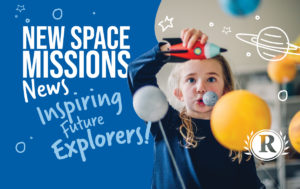
Kids love stargazing and imagining the mysteries of space. The night sky is captivating, full of stars, planets, satellites, comets and galaxies. For some, like the people at NASA and the European Space Agency, that desire to understand and explore outer space didn’t fade as they grew up. In 2023, space-lovers of all ages have lots of cosmic content to look forward to.
Moon Crew
Artemis II, the second mission in NASA’s Artemis Program and the first manned mission, isn’t blasting off until next year, but in early 2023, NASA will announce the four crew members who will be on board. They’ll spend the following months undergoing rigorous training to prepare for their journey, which will take them in an orbit around the moon and back to Earth.
Lunar Landers
In a series of partnerships with different private companies, NASA will be sending robotic landers to the moon to study its terrain, radiation levels, and resources. These explorations will begin in 2023 with Astrobotic’s Peregrine lunar lander, which will take 11 scientific instruments to the Lacus Mortis crater.
JUICE-y Journey
In April, ESA’s Jupiter Icy Moons Explorer mission, or JUICE, will finally take flight, though the spacecraft won’t reach Jupiter until 2031. Once it reaches its destination, the spacecraft will spend three years exploring Jupiter and three of its moons to find evidence of life, assess ocean habitability, and find clues to how the planet and moons were formed.
Seats on the Starliner
Will this be the year that the “space taxi” becomes reality? NASA thinks so! A decade in the making, the Starliner is set to make its first crewed trip to the ISS, making way for future astronauts to travel to and from the space station. When the Starliner begins regular operations, NASA will pass the reins to Boeing and SpaceX.
Amazing Asteroids
In September, OSIRIS-REx is swinging by with something special. The spacecraft will drop a collection of rocks and soil samples from the asteroid Bennu at the Utah Test and Training Range before leaving for another expedition. And that’s not all for asteroids! The following month will see the start of a four-year mission to explore Psyche, a metal-rich, potato-shaped asteroid planet between Mars and Jupiter.
Parastronaut Possibilities
The ESA’s first astronaut trainee class in 13 years was announced in late 2022, and this year the 17 recruits will undergo 12 months of training at the European Astronaut Centre in Cologne, Germany. One of those recruits is already making history; John McFall, a British medic, lower-limb amputee, and Paralympic athlete, is the world’s very first astronaut with a physical disability, or “parastronaut.” Not even the sky’s the limit!